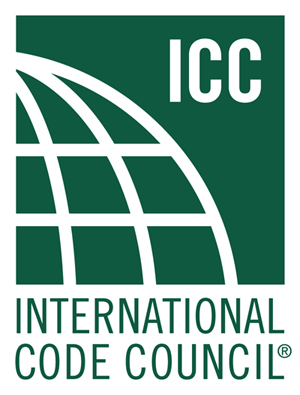Your cart is currently empty!
“How the IWUIC Safeguards Communities from Fire Hazards”

The increasing frequency and intensity of wildfires have put communities around the world at significant risk. As urban development encroaches into wildland areas, the need for comprehensive strategies to mitigate fire hazards becomes ever more critical. The International Wildland Urban Interface Code (IWUIC) is a powerful tool designed to protect communities from the devastating impacts of wildfires. This article delves into the essence of the IWUIC, its key provisions for fire risk mitigation, implementation strategies for at-risk communities, and showcases success stories from different regions.
Understanding the International Wildland Urban Interface Code
The International Wildland Urban Interface Code (IWUIC) is a model code developed by the International Code Council (ICC) aimed at reducing the risk of wildfire spreading into urban areas. The code provides a set of guidelines and standards specifically for areas where urban development meets wildland, commonly known as the Wildland-Urban Interface (WUI). This interface is particularly vulnerable to wildfires due to the presence of both human structures and natural vegetation that can fuel fires.
One of the primary purposes of the IWUIC is to establish minimum requirements for the design, construction, and maintenance of buildings in WUI areas. These requirements are designed to enhance the fire resistance of structures and to ensure that they can withstand the unique challenges posed by wildfires. The IWUIC also addresses landscaping, vegetation management, and access routes to facilitate emergency response efforts.
The IWUIC is part of a broader effort to integrate fire safety into urban planning and development processes. By adopting the IWUIC, communities can take proactive steps to mitigate fire risks and enhance public safety. The code is regularly updated to incorporate the latest research and best practices in wildfire management, ensuring that it remains relevant and effective in addressing emerging threats.
Understanding the IWUIC also involves recognizing its role in complementing other building codes and standards. The IWUIC works in conjunction with the International Building Code (IBC), International Fire Code (IFC), and other relevant codes to provide a comprehensive framework for fire safety. This integrated approach ensures that all aspects of fire risk, from structural integrity to emergency response, are adequately addressed.
The IWUIC is not a one-size-fits-all solution; it is designed to be adaptable to the specific needs and conditions of different communities. Local governments can customize the code to address their unique fire risk profiles and regulatory environments. This flexibility is crucial for ensuring that the IWUIC can be effectively implemented across diverse regions with varying levels of wildfire risk.
In summary, the IWUIC is a vital tool for protecting communities from the growing threat of wildfires. By establishing clear guidelines and standards for WUI areas, the code helps to enhance the resilience of buildings and landscapes, reduce fire risk, and safeguard public safety. For more detailed information on the IWUIC and related codes, visit IBC Manual.
Key Provisions of the IWUIC for Fire Risk Mitigation
The IWUIC contains several key provisions designed to mitigate fire risks in Wildland-Urban Interface areas. These provisions cover a wide range of aspects, from building materials to vegetation management, each aimed at reducing the potential for fire ignition and spread. One of the cornerstone provisions is the requirement for fire-resistant building materials. Structures in WUI areas must be constructed using materials that can withstand high temperatures and resist ignition, thereby reducing the likelihood of buildings catching fire during a wildfire event.
Another critical provision involves creating defensible space around structures. This involves managing vegetation in the immediate vicinity of buildings to reduce the amount of flammable material that could fuel a fire. The IWUIC specifies minimum distances for clearing vegetation and maintaining low-growing, fire-resistant plants. This defensible space serves as a buffer zone, slowing down or even preventing the spread of wildfire to structures.
Access routes and signage are also key provisions in the IWUIC. The code requires that roads and driveways be designed to accommodate emergency vehicles, ensuring that firefighters can quickly and safely reach threatened areas. Clear and visible signage is essential for guiding both residents and emergency responders during a wildfire event. These provisions help to enhance the effectiveness of emergency response efforts, potentially saving lives and property.
The IWUIC also addresses water supply requirements for firefighting. Adequate water supply is crucial for combating wildfires, and the code specifies minimum standards for water availability in WUI areas. This includes requirements for fire hydrants, water storage tanks, and other infrastructure to ensure that firefighters have the resources they need to effectively control and extinguish fires.
Landscaping and vegetation management are integral components of the IWUIC. The code provides guidelines for selecting and maintaining plants that are less likely to ignite and spread fire. It also includes provisions for regular maintenance to remove dead or overgrown vegetation, which can serve as fuel for wildfires. By promoting fire-resistant landscaping practices, the IWUIC helps to reduce the overall fire risk in WUI areas.
Finally, the IWUIC includes provisions for public education and awareness. Community involvement is essential for effective fire risk mitigation, and the code encourages local governments to educate residents about wildfire risks and preparedness measures. This can include public workshops, information campaigns, and other initiatives to ensure that residents are informed and ready to take action in the event of a wildfire. For more detailed information on the IWUIC and related codes, visit IBC Manual.
Implementation Strategies for Communities at Risk
Implementing the IWUIC in communities at risk of wildfires involves a multi-faceted approach that requires collaboration between local governments, residents, and various stakeholders. One of the first steps in this process is conducting a thorough risk assessment to identify the specific fire hazards present in the community. This assessment helps to inform the development of tailored strategies that address the unique needs and conditions of the area.
Public engagement and education are critical components of successful IWUIC implementation. Local governments can organize workshops, public meetings, and information sessions to educate residents about the importance of the code and how they can contribute to fire risk mitigation efforts. Providing clear and accessible information about the IWUIC helps to build community support and encourages residents to take proactive measures, such as creating defensible space around their homes and using fire-resistant building materials.
Collaboration with local fire departments and emergency services is essential for effective IWUIC implementation. Firefighters and emergency responders can provide valuable insights into the specific challenges and needs of the community, helping to ensure that the code is applied in a way that enhances public safety. Regular training and drills can also help to ensure that emergency services are prepared to respond quickly and effectively in the event of a wildfire.
Incorporating the IWUIC into local building codes and land-use planning processes is another crucial strategy. By integrating the code into existing regulatory frameworks, communities can ensure that new developments in WUI areas are designed and constructed with fire safety in mind. This can involve updating zoning ordinances, building permit requirements, and other regulations to align with the provisions of the IWUIC.
Financial incentives and assistance programs can also play a significant role in encouraging compliance with the IWUIC. Local governments can offer grants, low-interest loans, or tax incentives to support residents and developers in implementing fire-resistant measures. These financial tools can help to offset the costs of upgrading building materials, creating defensible space, and other fire risk mitigation efforts, making it easier for individuals and businesses to comply with the code.
Monitoring and enforcement are essential for ensuring the long-term effectiveness of the IWUIC. Local governments must establish mechanisms for regularly inspecting properties and enforcing compliance with the code. This can include routine inspections, penalties for non-compliance, and ongoing education and support to help residents and businesses maintain fire-resistant measures. By taking a proactive and collaborative approach, communities can effectively implement the IWUIC and significantly reduce their wildfire risk. For more detailed information on the IWUIC and related codes, visit IBC Manual.
Success Stories: IWUIC in Action Across Different Regions
Communities across different regions have successfully implemented the IWUIC, demonstrating its effectiveness in reducing wildfire risks and protecting lives and property. One notable success story comes from the state of California, which has been at the forefront of wildfire mitigation efforts. Several communities in wildfire-prone areas have adopted the IWUIC and seen significant improvements in their resilience to wildfires. By implementing the code’s provisions for fire-resistant building materials, defensible space, and emergency access routes, these communities have been able to reduce the impact of wildfires and enhance public safety.
In Colorado, the town of Boulder serves as another excellent example of IWUIC implementation. Boulder has faced numerous wildfire threats over the years, prompting local authorities to adopt the IWUIC as part of their comprehensive fire mitigation strategy. The town has invested in extensive public education campaigns, community workshops, and collaborative efforts with local fire departments to ensure that residents are well-prepared for wildfire events. These efforts have paid off, with Boulder experiencing fewer and less severe wildfire incidents in recent years.
The state of Texas has also seen success with IWUIC implementation, particularly in the Austin metropolitan area. Austin has a high risk of wildfires due to its proximity to large wildland areas and rapid urban development. By adopting the IWUIC and integrating its provisions into local building codes and land-use planning processes, Austin has been able to enhance its fire resilience. The city has also established financial assistance programs to support residents in upgrading their homes with fire-resistant materials and creating defensible space, further bolstering community preparedness.
In Oregon, the town of Ashland provides another compelling success story. Ashland has a long history of wildfire threats, and local authorities have taken proactive steps to mitigate these risks by adopting the IWUIC. The town has implemented extensive vegetation management programs, upgraded its water supply infrastructure for firefighting, and conducted regular community drills and training sessions. These efforts have helped to significantly reduce the town’s wildfire risk and enhance the overall safety of its residents.
The IWUIC has also been successfully implemented in international settings. For example, in Australia, several communities in wildfire-prone regions have adopted the principles of the IWUIC to enhance their fire resilience. By integrating the code’s provisions into local building regulations and land management practices, these communities
